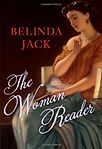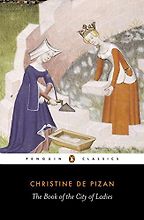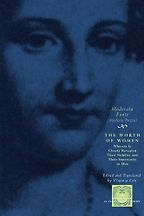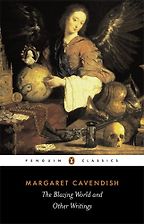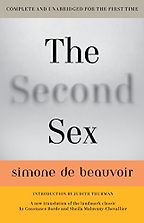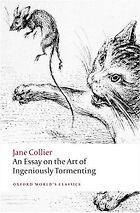Before we look at your five book choices, I wanted to get some background to the history of women readers, which you’ve been exploring in your latest book. So when did women start reading, and what kinds of books were they reading?
Of course, the earlier back you go the less sure we can be. But it’s pretty clear that there were female Babylonian scribes in ancient Mesopotamia. The assumption is that if they were able to operate as scribes they must have had some reading ability. They would have acted as readers in market places and been reading letters for the illiterate and also lists and simple kinds of legal documents.
Rather than the kind of reading many of us do these days, which is for pleasure.
Yes, reading exclusively for pleasure comes very late. It’s not really until the 17th century that people really think about reading primarily as an enjoyable activity.
What kinds of obstacles have women encountered over the centuries regarding being allowed to read?
Well, across the millennia women have encountered all manner of obstacles. Obviously there have been periods when women have been prevented from gaining any sort of education, and so prevented from gaining literacy. Then there is the problem of access to reading material, with different forms of censorship in different places and at different times in terms of what women could read. And that is still the case today. There’s still a huge number of illiterate women in the world and there are still parts of the world where women are prevented from having access to what they would like to read.
There are also psychological barriers, in the sense in which women censor their own reading. Although the Catholic Church’s Index of Prohibited Books is now dormant, there’s still a list. And there are still some Catholic women who wouldn’t read anything that had been placed on that list. So the barriers to reading can be internalised as well.
Your five books give us a taster of what women were reading in different centuries, starting with France in the 14th century. The author of The Book of the City of Ladies, Christine de Pizan, sounds like an early feminist.
Yes, I think she was. It was hard to pick out the key books in the history of women readers because there are such a vast number. But I wanted to pick them from different periods. Christine de Pizan was one of the earliest women authors to challenge the misogyny of the day. She identified all sorts of differences between the way girls and boys and men and women were treated, and felt that any inferiority that one could legitimately allocate to women was really a function of their lack of education.
What kind of people was she writing about?
She wrote about some of the most important women in history that she knew of to demonstrate that women could be remarkable figures and remembered in history for their exceptional contributions – Dido of Carthage, Lucretia, Medea and, of course, Sappho. She also wrote courtly poetry and in it she included women who were rather stronger than in the tradition of her day. So she provides role models of women who aren’t passive in every respect but have their own ideas about things.
How did people react to her work?
She was widely respected by both men and women but, of course, there were men who didn’t like what she was writing about. The so-called war between the sexes begins this early. There were a lot of people who vilified her and felt she was stepping completely out of line in writing about the things she wrote.
Did they try to censor her?
Not in any formal sense, but they certainly tried to shame her in a way that might silence her. But they were unsuccessful.
Can you tell me about the person behind your next choice, The Worth of Women: Wherein Is Clearly Revealed Their Nobility and Their Superiority to Men? It’s by ‘Moderata Fonte’, a pseudonym, who was writing in Renaissance Venice.
She was actually called Modesta Pozzo and she was a Venetian noblewoman. She was outraged by some of her reading. In my research about women’s reading I discovered that quite often it was a case of looking at what women had written as a reaction to their reading – when they felt frustrated and angry, particularly by representations of women that they thought were completely untrue to life.
What had she been reading to make her feel that way?
It was men who wrote about women as evil and fallen and so on, particularly intellectual women. Modesta was extremely astute about what the reading process is and how you can read passively or actively – passively in the sense that you just assume everything you are reading is true, or actively, when you say to yourself, “Well, hang on a moment. You may be arguing this, but I’m not entirely persuaded by it.” So you have her saying, “For goodness sake, don’t think that everything you read by way of history is true because it’s going to be written by a man and men are coming at this from a particular slant.” So there’s a wonderful kind of scepticism she’s displaying, which I think is quite remarkable so early on.
These concepts seem so modern – it’s interesting to think they were being discussed so many years ago.
Yes, quite.
Looking forward to the 17th century, how was it that the Duchess of Newcastle, Margaret Cavendish, shaped the world of women readers in her book The New Blazing World?
I mentioned earlier that I think there are material and physical barriers to women and their reading, and then psychological barriers. I think what Margaret Cavendish was aware of was that books and reading could be an extraordinary imaginative liberation. And that imaginative liberation was really just as important as the physical liberation.
She spells out in The Blazing World how it’s not possible for her to aspire to be a celebrated king and she talks about people like Alexander and Caesar – and Henry V and Charles II. She also acknowledges that she can’t operate in the world of politics and so she provides this extraordinary story in which she creates her own world and becomes “Margaret I”!
What happens in that world?
In her world she has authority and control, and she essentially says to other women, “Look, you can enter this world that I’ve created, this world in which women are treated very much better, or you could even create your own world, ie, be authors of your own books and have control as authors yourselves.”
Was she writing under her own name?
Yes, she was, because as the Duchess of Newcastle she had the status to be able to do that.
You mentioned earlier on that women didn’t start reading for pleasure until around this time. What acted as the catalyst for that?
The Romans did have a notion of the pleasure – voluptas – of reading, so some non-essential reading happened in the classical world. But, it’s not really until the 18th century and the rise of the novel that people start to read in a way that’s much more like the way we read for pleasure.
The reading of poetry and the reading of sermons and the reading of conduct books and the reading of plays is really what dominates until the 18th century. With the advent of the “modern” novel there’s the idea of private reading and being able to withdraw into the world of the novel, which is a secret pastime where you can be enlightened, titillated, frightened, entertained and so on. Pleasure becomes a reason for reading unlike before, where much of the reading that was done was practical – or for moral and spiritual edification.
So pleasure and entertainment come to the fore as reasons for women to read, which is showcased in Jane Collier’s 18th century book, An Essay on the Art of Ingeniously Tormenting.
This is a satirical work and I think it gives us a very clear idea of how some women read the so-called “conduct books”. These books emerged in the late 16th and early 17th century and they told women how to behave in every respect, from being perfect wives to loving mothers.
It sounds a bit like those 1950s books about how to be a perfect housewife.
They were absolutely like that and ranged across every aspect of a woman’s life. They were clearly popular. They obviously sold well. The question is how many women actually read them and how seriously did they take them.
So Jane Collier’s book is a send-up of the genre.
Yes, this is a parody, and I suspect that Jane Collier wasn’t the only woman to have read these books and thought, “How tedious and absurd and why should I aspire to be all these things?” It’s a wonderful act of rebellion and it’s very funny because she thinks of all sorts of ways of being the opposite kind of woman from the woman the conduct books were promoting.
Such as?
Well, for example, if there is someone that you don’t like very much – and she talks about them as a “friend” but it could equally be a husband – you can try to avoid them socially for as long as you possibly can, then when you bump into them you accuse them of having been avoiding you! Also, you can say something like, “Isn’t it appalling, these rumours that are circulating about you? You must be so embarrassed and of course I know they aren’t true…”
Finally you’ve gone for the 20th century classic, The Second Sex by Simone de Beauvoir.
This is a huge work and I wonder how many women now actually read it.
How did it change women readers at the time and their perception of themselves?
What’s fundamental to it is that Simone de Beauvoir is the first person to make the distinction between sex and gender. We might be physically different but the idea of the feminine and the masculine is a cultural thing. You’re born a woman, but actually you become the woman that the culture you live in expects you to be. In making that distinction between sex and gender – gender being what’s forced on you by the society in which you live, and sex being your biological being – she drew attention to how much of what she thought women had to contend with was actually something that society imposed and not in any sense innate.
It’s a vast work with many different aspects, but one thing she focuses on is childbirth. Rather naively, I think, from our 21st century perspective, she thought that as long as contraception was available, so that women could have sexual lives without conceiving if they didn’t want to, it would all be all right. She also thought excellent free childcare would improve women’s situation, and that if both those things happened, men and women could compete on an equal footing.
And things have greatly improved since the time she wrote the book in the 1940s, but it’s still not quite the Utopia she anticipated.
Absolutely. Having a family isn’t quite like that and in part that is still a cultural issue. It still seems to be more difficult for men to vary their career paths than women and women still do the bulk of childcare. But I think it was an immensely influential and important book. It went on to the Catholic index because of her views on abortion, but it did open up all sorts of really important debates that take off in the 1950s and 60s. Although there are so many ironies – she wrote this extraordinary and wonderful work in the 1940s, yet in the 1960s, in the Lady Chatterley’s Lover legal case, the chief prosecutor said, “Is this a book you would want your servants or your wife to read?” So during the so-called swinging sixties, there were still people around who thought that women should be prevented from reading a novel!
One book which probably would have been frowned on in the 1960s and put on the Catholic index is the bestselling erotic novel Fifty Shades of Grey. What do you think that reveals about women readers today?
I haven’t actually read it and I ought to read it to see whether this is actually the case. But I do sometimes wonder, with the power of advertising now, whether there aren’t vast numbers of books which, if they were given that sort of publicity, would also be read very widely. To some extent we like reading what other people are reading, so we can talk about our reading.
But there is this feeling that it has opened the floodgates for a new type of genre, “mummy porn”, which is changing female reading habits.
I’m not sure that is the case. There are images from the 18th century of women reading novels with their hands under their skirts, so this type of thing has been around for a very long time. I think the relationship between erotic excitement and the novel goes back a very long way.
How do you think our reading habits have changed over the years?
They are certainly more varied for the privileged amongst us. If you live in Europe or North America, for instance, you have access to almost everything. You can buy second-hand books over the web or new books that are discounted. Having said that, I think sometimes we don’t make the most of that choice and tend to get stuck in a genre and that we should experiment a bit more with the things we read.
Of course, we shouldn’t forget there are 800 million illiterates in the world and two thirds of them are women. I am trying to give some support to Book Aid International, a UK charity which promotes literacy in sub-Saharan Africa, because I was shocked at the extent of the illiteracy. So when we talk about readers’ habits there couldn’t be a bigger difference between those of us who are the most privileged women readers and those who are the least privileged.
Five Books aims to keep its book recommendations and interviews up to date. If you are the interviewee and would like to update your choice of books (or even just what you say about them) please email us at [email protected]
Five Books interviews are expensive to produce. If you've enjoyed this interview, please support us by donating a small amount.

